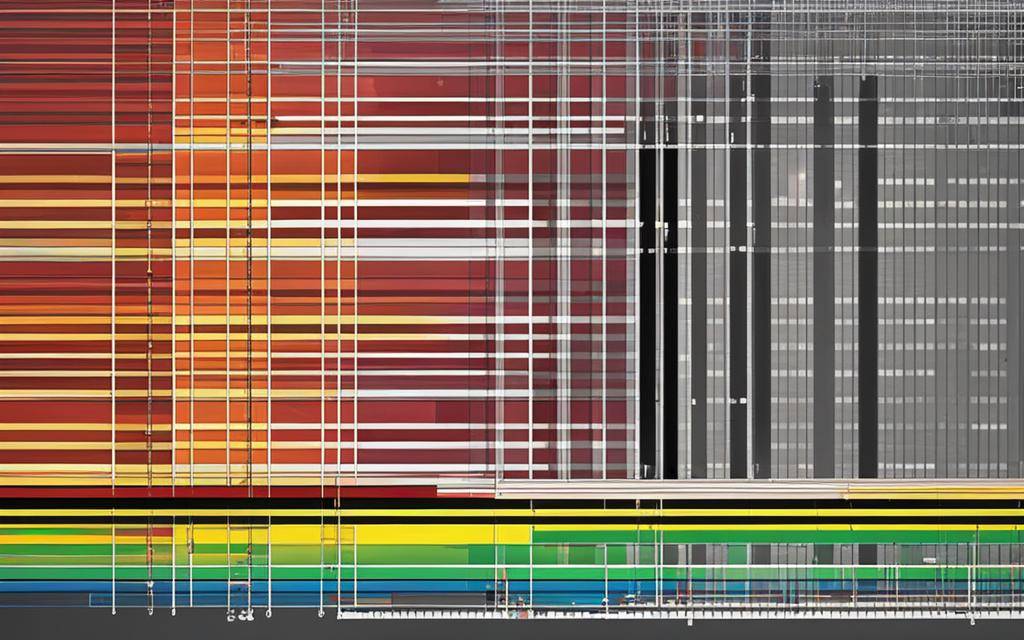Gas detectors and analyzers play a crucial role in workplace safety, scientific research, and environmental monitoring. These devices provide valuable information about the presence and concentration of hazardous gases, ensuring the well-being of workers and the protection of the environment. However, to maintain their accuracy and reliability, regular calibration is essential.
Calibration involves comparing the readings of a gas monitor to known reference points to adjust any potential drift or loss of accuracy. Without calibration, gas detectors can provide inaccurate readings, jeopardizing the safety of individuals and compromising the reliability of data collected.
So, how often should you calibrate a 4 gas monitor? While specific recommendations may vary, the general guideline for safety applications is calibrating every 6 months. However, it’s important to consult the manufacturer’s recommendations for your specific gas monitoring device.
Proper calibration requires the use of gas calibration equipment. This equipment provides a reference gas mixture to verify the accuracy of the monitor. Gas calibration equipment can include gas canisters or proprietary solutions provided by the manufacturer.
Regular calibration not only ensures workplace safety but also enhances the reliability and accuracy of gas detectors. It allows for early detection of gas leaks, enables prompt actions to mitigate potential risks, and provides confidence in the readings and alarms of the device.
By following the recommended calibration intervals and utilizing gas calibration equipment, you can maintain the effectiveness of your gas monitoring devices, creating a safer work environment and promoting confidence in the accuracy of the data collected.
Why is Gas Calibration Equipment Essential?
Gas calibration equipment plays a crucial role in maintaining workplace safety and ensuring the reliability and accuracy of gas detectors. Regardless of the sensor type or application, all gas monitoring devices are susceptible to drift and loss of accuracy over time.
Gas calibration equipment provides a reference for calibration, allowing gas detectors to be adjusted and fine-tuned to provide accurate measurements.
Whether it’s gas canisters or proprietary calibration equipment from manufacturers, these tools allow for precise calibration based on known gas concentrations. They are essential for verifying the accuracy of gas detectors and ensuring that they are functioning correctly in various environments.
When it comes to workplace safety, the reliable operation of gas detectors is paramount.
Gas calibration equipment helps to minimize the risks of gas leaks and prevent potential disasters by ensuring the accuracy of gas detection systems. Workplace safety heavily relies on accurate measurements, as even a minor deviation in gas concentration can have severe consequences.
By regularly calibrating gas detectors using proper equipment, organizations can confidently rely on these devices to provide accurate readings, enabling timely actions to mitigate any hazardous situations.
Furthermore, employing multi gas calibration equipment offers additional control and precision. With the capability to mix calibration gas mixtures on-demand, organizations can ensure precise calibration for multiple gases, optimizing workplace safety.
Key Points:
- Gas calibration equipment is vital for maintaining workplace safety.
- All gas monitoring devices are prone to drift and loss of accuracy.
- Calibration equipment provides a reference for calibration and adjustment.
- Gas detectors rely on accurate measurements for prompt action.
- Multi gas calibration equipment enhances control and precision.
Different Recommendations for Calibration Intervals
When it comes to calibrating gas detectors, different entities provide varying recommendations for calibration intervals. The Occupational Safety and Health Administration (OSHA) suggests calibrating gas detectors before each use, emphasizing the importance of accurate readings for workplace safety.
On the other hand, manufacturers may recommend a calibration frequency of every 3 to 6 months. However, it’s essential to consider the type of sensors used in the gas detectors. Different sensor types may require different calibration intervals.
For example, manufacturers may claim that their devices don’t require frequent calibration due to the use of non-dispersive infrared (NDIR) sensors, which are known for their stability and accuracy. These sensors typically have longer calibration intervals compared to electrochemical sensors.
One way to enhance calibration efficiency is through bump testing, a faster method to check the calibration of gas detectors. Bump tests involve exposing the device to a known concentration of test gas and verifying if the instrument reading falls within an acceptable range.
Bump testing can provide confidence in the accuracy of gas detectors and may prolong the time between full calibrations. However, if the bump test results are not within the acceptable range, a full calibration should still be performed.

As each workplace environment is unique, it is important to carefully consider both OSHA regulations and the manufacturer’s recommendations for calibration intervals. By following these guidelines and utilizing bump testing where applicable, businesses can ensure the safety and accuracy of their gas detectors.
The Importance of Bump Testing
Bump testing plays a crucial role in ensuring the accuracy and reliability of gas detectors. It is a quick and effective process that verifies the calibration and sensor accuracy of these devices. By exposing the gas detector to a known concentration of test gas and comparing the instrument reading to the actual gas concentration, bump testing confirms if the calibration falls within an acceptable tolerance range. This process provides confidence in the performance of the gas detector and enhances workplace safety.
Bump testing can also help extend the calibration cycle, reducing the frequency of full calibrations. However, it is essential to note that if the bump test results do not fall within the acceptable range, a full calibration should be performed. Regular bump testing is especially necessary after potential damage to the gas monitor to ensure ongoing accuracy and reliability.

| Bump Testing Benefits | Bump Testing Limitations |
|---|---|
|
|
Legal Implications and Best Practices
To ensure the legal validity of gas detector readings, it is important to adhere to best practices for calibration. While calibrating gas detectors before and after each use is ideal, following the manufacturer’s guidelines for calibration intervals is generally sufficient. However, it is essential to consider specific circumstances, such as infrequent device usage or potential damage, which may warrant more frequent calibration.
Creating a culture of safety in the workplace involves regular maintenance and checking of all safety equipment, including gas detectors. In addition to calibration, bump testing can provide additional confidence in the proper functioning of these devices.
If a gas detector fails the bump test, calibration should be performed immediately to ensure accurate results. Calibration not only helps maintain compliance with legal requirements but also ensures the safety and well-being of employees and the integrity of the work environment.
By adopting best practices and adhering to calibration and testing procedures, businesses can mitigate legal implications, maximize the reliability of gas detectors, and safeguard the overall safety of their workforce.
Conclusion
Regular calibration of gas detectors is crucial for maintaining workplace safety and ensuring accurate and reliable readings. The frequency of calibration depends on several factors, including the type of gas detector, sensor type, exposure to adverse conditions, and the manufacturer’s recommendations.
Bump testing can be a useful tool to extend the calibration cycle, but it is important to perform a full calibration if the bump test results are not within the acceptable range. By following the guidelines provided by the manufacturer and considering the specific needs of your workplace, you can prioritize workplace safety and maintain the integrity of your gas detection system.
Remember, workplace safety should always be a top priority, and regular calibration plays a critical role in achieving this. By ensuring the accuracy and reliability of your gas detectors, you can create a safer working environment for everyone involved.

